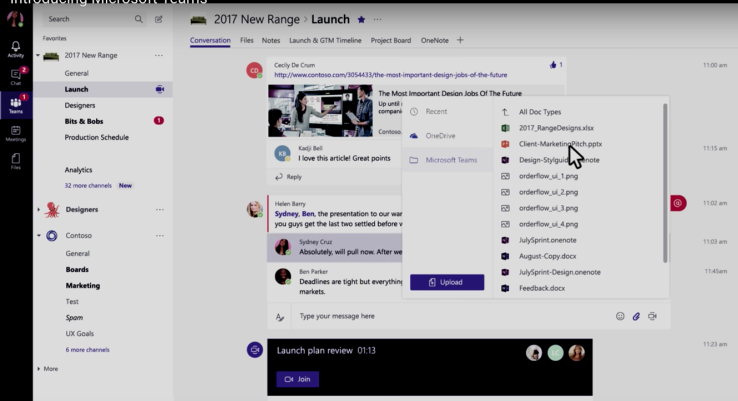

Microsoft introduced Microsoft Teams today to much fanfare and hoopla — as only Microsoft can seem to do these days. But when you take a close look at today’s announcement, what have you really got here — a 10-year-old idea on how to communicate and collaborate in the enterprise with a distinctly Microsoft twist.
As I wrote previously about Slack and more recently Workplace by Facebook, Microsoft Teams is nothing new. About 10 years ago, a new kind of enterprise software emerged. Dubbed Enterprise 2.0, it was supposed to transform the way we work and “kill email” by giving us a space to collaborate and share work. It didn’t succeed — or at least wasn’t as transformative as once believed, and many of the early companies were absorbed (including Microsoft spending $1.2 billion to buy Yammer).
You may also recall that Microsoft spent a cool $8.5 billion to buy Skype in 2011. After spending almost $10 billion for two companies focused on communications and collaboration, five years later, we have a new product that appears to be influenced by these acquisitions. It’s interesting that Microsoft left Yammer on the bench for this one, and seems to have built Teams on Skype and the Office 365 platform.
Regardless, this isn’t revolutionary technology, it’s just technology that Microsoft has begun to pay attention to… again. Who knows why those 10 billion dollars in investments haven’t amounted to much in the last five years, but with Slack making a lot of noise, and Microsoft riding a cloud wave, perhaps it felt it was time to revisit the idea.
Alan Pelz-Sharpe, an analyst at Digital Clarity Group who has been watching the collaboration space for many years, sees Teams as a kind of portal play, trying to get you to do all of your work in one place. That means that if Microsoft can build a space to communicate with your co-workers, while using all Microsoft tools, then we can return to the glory days of all Microsoft, all the time.
The fact is that there appears to be some slick integration here among Microsoft tools (if you can believe the shiny promo videos), but the key thing here is that it’s built primarily for Microsoft. Surely there will be connectors out to other enterprise tools, because, in this day and age, there have to be, but Slack has an advantage that Facebook, Microsoft and even Cisco lack.
Slack was built from the ground up as a neutral cloud company, meaning it has come up with a way to connect to various enterprise applications, and it has no ties to any other platform or business. It’s communications/collaboration Switzerland. These big companies are beholden to their own platforms, even if they profess to play nicely with others. Slack doesn’t have to care about all those external factors because it does one thing well.
You might think we had progressed a great deal in 10 years — and we probably have — but the fact is that communications and collaboration remains mostly an unsolved problem. When you see a market opportunity, you try to use your resources to take advantage of it, and in this case we have Microsoft trying yet again to grab a piece of the communications and collaborations business in an attempt to do what it has always done: keep us using Microsoft tools.

